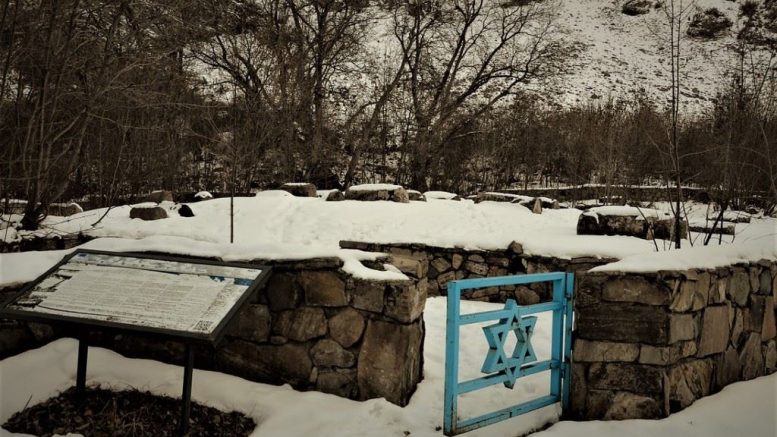Krasnaya Sloboda (Red Town) near Guba, Azerbaijan, is not the only place in the Caucasus, where Azerbaijanis and Jews could live together in peace. Before the ethnic cleansings, perpetrated by Armenian nationalists, they had been living in an Armenian village (Yeghegis), Yeghenadzor district (Daralayaz mahali in Azerbaijani). This settlement is approximately 18km from Yeghenadzor and 135km from Yerevan, on the slope of ancient Daralayaz, 1640 meters above sea level. There are tombstones with texts in Hebrew and Aramaic, as well as in Azerbaijani language. The tombstones dated back to the mid-13th century and some of them to 1337, and these are evidences of the existence of a Jewish community on the territory of modern Armenia from ancient to contemporary times, and its peaceful coexistence with predominantly Azerbaijani population living in this area. Obviously, the exodus of the most ancient Jewish community from Armenia was caused by the expulsion of their neighbors, the Azerbaijanis from Yeghegis. The exodus of the Jews, against the backdrop of the heyday of Jewish communities in Georgia and Azerbaijan, is a black spot in the history of modern Armenia, as is the genocide against Azerbaijanis. Through the policy of ethnic cleansings against Azerbaijanis, Turks, Kurds, Assyrians, Yazidis, Greeks and Jews, Armenia has become a mono-ethnic state, where more than 99 % of the population are Armenians. However, a miraculously preserved old Azerbaijani-Jewish cemetery is a tangible evidence of the real history of these lands. On the edge of the village, there is a shaky bridge that leads to the other side of the river which separates Jewish and Azerbaijani cemeteries, and that is what Yeghegis and Krasnaya Sloboda, where Jews and Azerbaijanis are still living like a single family, have in common.
by Elxan Alasgarov, Director of Baku Network




Photos by Alexander Lapshin



Photos by Vahe Nikoghosyan





Photos by Mosherochman Moshon



Be the first to comment at "Disappearing traces of Jews in Armenia"